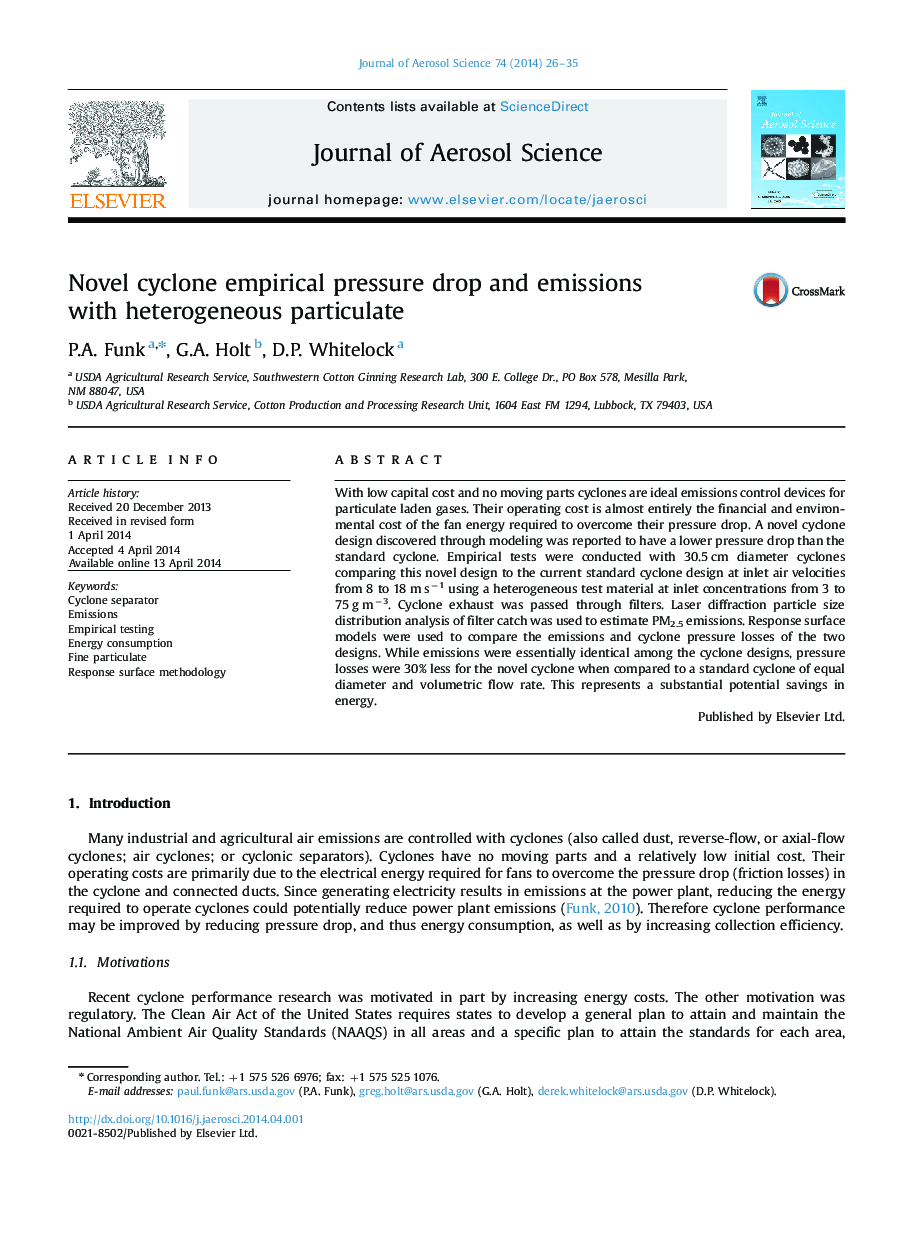| Article ID | Journal | Published Year | Pages | File Type |
|---|---|---|---|---|
| 4452337 | Journal of Aerosol Science | 2014 | 10 Pages |
•We built the novel cyclone others discovered through numerical simulation.•Empirical tests compared the novel cyclone to the industry standard cyclone.•Emissions of PM2.5 from heterogeneous particulate were basically the same.•Pressure losses were 30% less with the novel cyclone.•The novel cyclone has the potential to save energy without increasing emissions.
With low capital cost and no moving parts cyclones are ideal emissions control devices for particulate laden gases. Their operating cost is almost entirely the financial and environmental cost of the fan energy required to overcome their pressure drop. A novel cyclone design discovered through modeling was reported to have a lower pressure drop than the standard cyclone. Empirical tests were conducted with 30.5 cm diameter cyclones comparing this novel design to the current standard cyclone design at inlet air velocities from 8 to 18 m s−1 using a heterogeneous test material at inlet concentrations from 3 to 75 g m−3. Cyclone exhaust was passed through filters. Laser diffraction particle size distribution analysis of filter catch was used to estimate PM2.5 emissions. Response surface models were used to compare the emissions and cyclone pressure losses of the two designs. While emissions were essentially identical among the cyclone designs, pressure losses were 30% less for the novel cyclone when compared to a standard cyclone of equal diameter and volumetric flow rate. This represents a substantial potential savings in energy.
